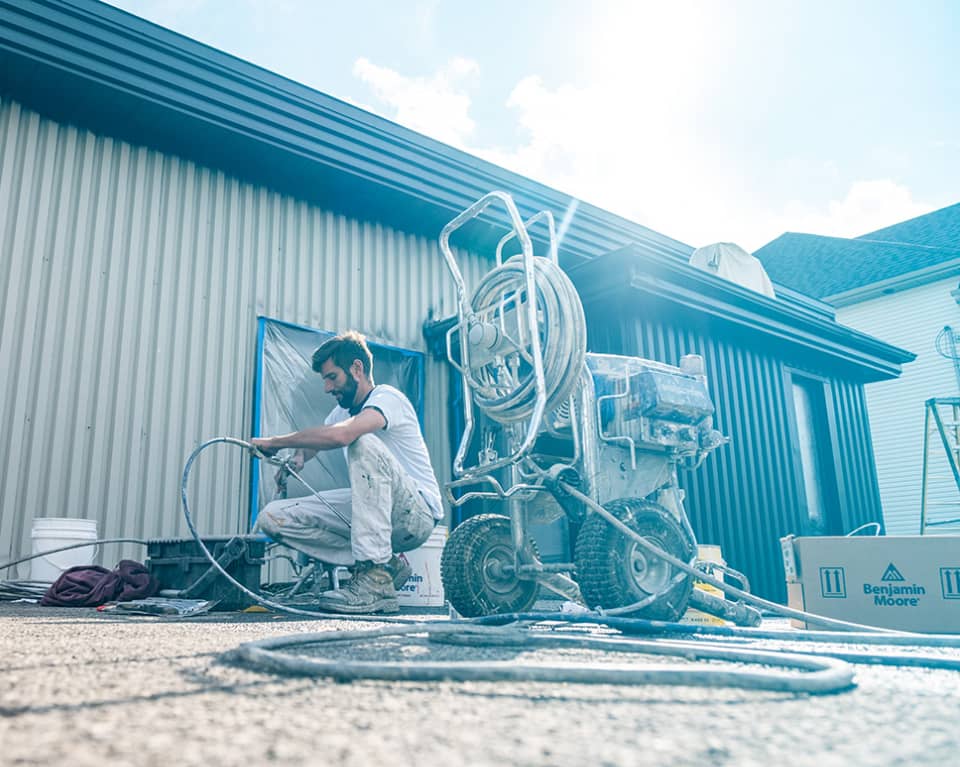Advantages of the spray painting gun
This greatly efficient tool allows the coat of paint to be spread evenly on the surface. And often, one coat is sufficient to cover up properly. However, this tool should be manipulated by professional painters only as its essential to receive a complete training on how to use it so it won’t be dangerous.
Dangers of the spray painting gun
Indeed, it sometimes happens that amateurs use neglectfully the spray painting tool and particles of paint catch in the wind and are accidentally sprayed on their car, their garden furniture, or even on the neighbour’s balcony!
How not to damage another surface?
Here are a few tips on how to not damage your car or any other surface when exterior painting using a paint gun.
- Make sure no objects lie in a 20 feet diameter. At a distance of 20 feet, the drop of atomised paint coming from a fine finish nozzle is already dried if the temperature is of 20 degrees Celsius or over. So beyond 20 feet, the danger zone is zero risk if the climatic conditions are favorable.
- Move objects which can be moved. When possible, move the cars that are nearby, even if they are parked at a little more than 20 feet. At FinDecor, when we paint near a public space, we reserve the place – it sometimes means we have to cover up a car or call a towing. There is always someone on the team who is in charge of safety and takes care of this danger matter proactively and actively throughout the project.
- Do not use the spray paint gun when it’s very windy. This may seem obvious, but unfortunately, a lot of people take out the spraying gun when it’s windy and they end up damaging the neighbour’s building. Keep in mind that the stronger the winds are and the closer the other buildings are, the more dangerous it is.
The best option: hire a certified painter!
Obviously, if you want to avoid the problems, the best option is to call upon a certified building painter who did receive the appropriate training in regards to the use of the spray painting gun. An experienced painter will know how to evaluate the situation by putting a particular attention to certain details:
- Is it a climatic high or low pressure? Hiring a pro who understands the climatic conditions and the nozzles (for exterior use) that have an electronic calibration of the machine for more precision.
- What is the air degree of humidity? If the air is very humid and you are painting a ceiling or another surface where the rain won’t fall, the paint paints won’t dry once they have been sprayed, which is a real danger.
- What is the surface temperature? It’s important to always verify the temperature of the substrate to paint with a laser so to avoid painting it below 2 degrees Celsius or over 30 degrees Celsius – work won’t be durable if it’s not between those temperatures.
- At which angle should we paint? The angle at which we hold the painting pistol and the location on the surface can play a role in the level of danger of the. For example, if a painter is painting over the parapet, the wind is there while it’s not windy underneath.
FinDecor’s team already painted large exterior surfaces that were located at only 10 feet from a Volvo car dealer, with gusts of wind that go up to 50km per hour. Our painters knew how to deal with it so everything turned out fine.
To learn more about spray painting or to make a reservation for professional painter’s services, please contact us.
Dave Beaupre
Master Painter

